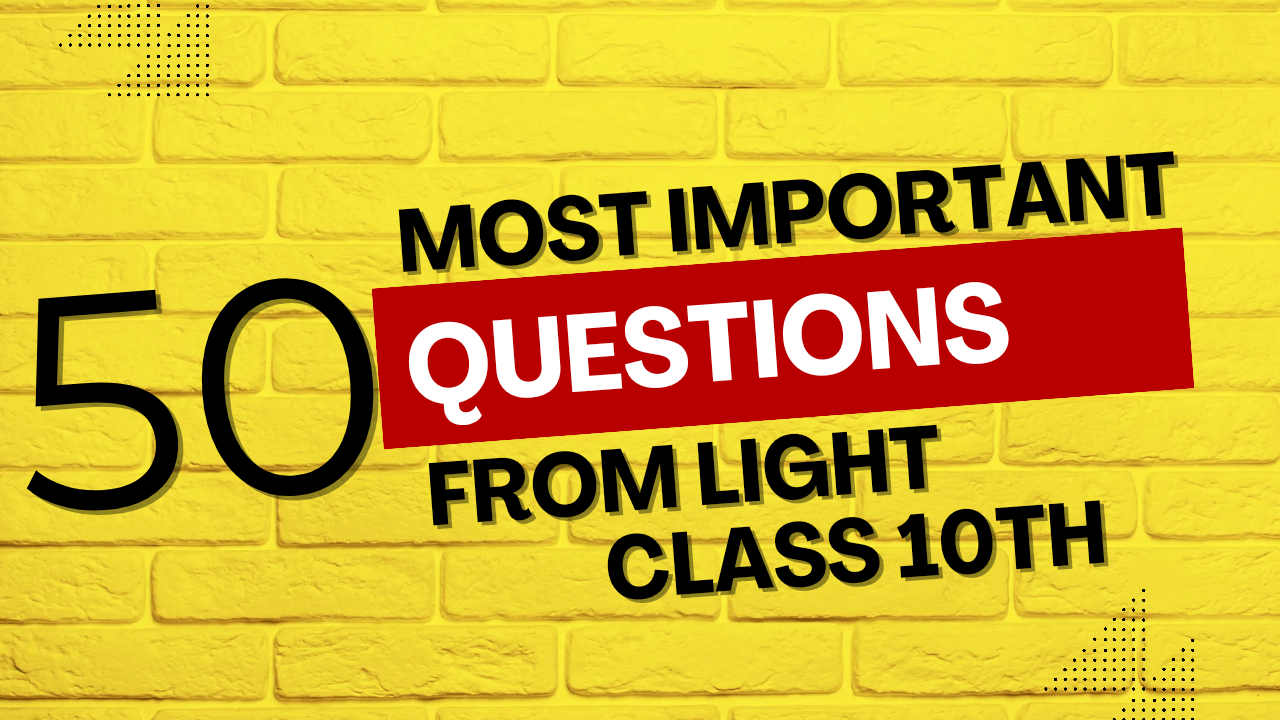Assertion (A): Myopia can be corrected using a concave lens.
Reason (R): A concave lens converges light rays to form a clear image on the retina.
Assertion (A): Hypermetropia occurs when the focal length of the eye lens is too long.
Reason (R): A convex lens is used to correct hypermetropia.
Assertion (A): Astigmatism is caused by an irregular curvature of the cornea or lens.
Reason (R): A cylindrical lens is used to correct astigmatism.
Assertion (A): Presbyopia is commonly observed in older adults.
Reason (R): It is due to the weakening of ciliary muscles and loss of elasticity of the lens.
Assertion (A): Cataract causes clouding of the lens, leading to blurred vision.
Reason (R): Surgery is the only way to correct cataracts.
Assertion (A): Myopia is also known as nearsightedness.
Reason (R): The image is formed behind the retina in myopia.
Correct! Myopia is indeed nearsightedness, but in myopia, the image is formed in front of the retina, not behind it.
Assertion (A): Hypermetropia is also called farsightedness.
Reason (R): The eyeball becomes too long, leading to hypermetropia.
Correct! Hypermetropia is farsightedness, but it occurs when the eyeball is too short, not too long.
Assertion (A): Astigmatism leads to blurred or distorted vision.
Reason (R): It is caused by an uneven curvature of the cornea or lens.
Correct! Astigmatism causes blurred vision, and the uneven curvature of the cornea or lens is the reason behind it.
Assertion (A): Presbyopia can be corrected by using bifocal lenses.
Reason (R): Presbyopia is caused by the lens hardening and the ciliary muscles weakening with age.
Correct! Presbyopia is age-related, and bifocal lenses help by addressing both near and far vision issues.
Assertion (A): A cataract causes a loss of transparency in the eye lens.
Reason (R): Cataracts can be treated with corrective lenses.
Correct! While cataracts do cause a loss of transparency, they cannot be treated with corrective lenses; surgery is required.
Assertion (A): The retina contains photoreceptor cells called rods and cones.
Reason (R): Rods are responsible for color vision, while cones are sensitive to dim light.
Correct! The retina does have rods and cones, but rods are sensitive to dim light, while cones are responsible for color vision.
Assertion (A): The cornea is the transparent, curved front part of the eye.
Reason (R): The cornea helps in focusing light on the retina.
Correct! The cornea is transparent and curved, and its primary function is to focus incoming light on the retina.
Assertion (A): The pupil regulates the amount of light entering the eye.
Reason (R): The iris controls the size of the pupil based on light intensity.
Correct! The pupil regulates light, and the iris adjusts its size depending on light intensity.
Assertion (A): The lens of the eye is flexible and changes shape to focus on objects at different distances.
Reason (R): This process is called accommodation.
Correct! The eye lens changes shape to focus, and this ability is termed accommodation.
Assertion (A): The optic nerve carries visual information from the retina to the brain.
Reason (R): The optic nerve transmits electrical signals formed by the photoreceptor cells in the retina.
Correct! The optic nerve carries electrical signals from the retina to the brain, enabling vision.
Assertion (A): The cornea is the primary structure responsible for focusing light on the retina.
Reason (R): The cornea has a fixed convex shape and refracts most of the light entering the eye.
Correct! The cornea’s convex shape is responsible for bending and focusing light onto the retina, contributing to most of the eye’s refractive power.
Assertion (A): The pupil adjusts its size to control the amount of light entering the eye.
Reason (R): The pupil is controlled by the iris, which expands or contracts based on light intensity.
Correct! The iris regulates the size of the pupil in response to light intensity, allowing appropriate amounts of light to enter the eye.
Assertion (A): The retina converts light into electrical signals.
Reason (R): The photoreceptor cells in the retina generate nerve impulses in response to light stimuli.
Correct! Photoreceptors (rods and cones) in the retina convert light into electrical signals that are transmitted to the brain via the optic nerve.
Assertion (A): The lens changes shape to focus on objects at varying distances.
Reason (R): The ciliary muscles alter the curvature of the lens during accommodation.
Correct! The lens changes shape through the action of the ciliary muscles, a process known as accommodation, to focus light from objects at different distances.
Assertion (A): Rods are more sensitive to light than cones.
Reason (R): Rods function well in dim light and are responsible for night vision, while cones function in bright light.
Correct! Rods are highly sensitive to low light and are specialized for vision in dim conditions, while cones handle bright light and color vision.
Assertion (A): Stars appear to twinkle because of atmospheric refraction.
Reason (R): Light from stars passes through layers of the atmosphere with varying refractive indices.
Correct! While both the assertion and reason are true, the twinkling effect is due to the continuous change in position of light caused by atmospheric turbulence.
Assertion (A): The Sun appears red during sunrise and sunset.
Reason (R): At sunrise and sunset, sunlight has to travel through a greater thickness of the atmosphere.
Correct! The greater thickness of the atmosphere scatters shorter wavelengths (blue), leaving red as the dominant color.
Assertion (A): Planets do not twinkle like stars.
Reason (R): Planets appear larger than stars because they are closer to the Earth.
Correct! While both statements are true, planets do not twinkle because their apparent size averages out the effect of atmospheric refraction.
Assertion (A): The apparent position of a star is slightly different from its actual position.
Reason (R): Atmospheric refraction bends the starlight as it enters Earth’s atmosphere.
Correct! The bending of light by the Earth’s atmosphere causes the star’s apparent position to shift slightly.
Assertion (A): The sky appears blue during the day.
Reason (R): Blue light is scattered more than other colors due to its shorter wavelength.
Correct! Blue light’s shorter wavelength makes it scatter more effectively, giving the sky its blue color during the day.
Assertion (A): Dispersion of light occurs because different colors of light have different speeds in a medium.
Reason (R): The refractive index of a medium is the same for all wavelengths of light.
Correct! A is true, but R is false because the refractive index varies for different wavelengths, causing dispersion.
Assertion (A): A prism splits white light into its constituent colors.
Reason (R): Different wavelengths of light refract by different amounts when passing through a prism.
Correct! The prism disperses light because each wavelength refracts by a different angle, splitting white light into its spectrum.
Assertion (A): The red color in the spectrum deviates the least in a prism.
Reason (R): Red light has the shortest wavelength in the visible spectrum.
Correct! Red light deviates the least because it has the longest wavelength, not the shortest, making R false.
Assertion (A): Violet light bends the most during dispersion in a prism.
Reason (R): Violet light has the shortest wavelength in the visible spectrum.
Correct! Violet light bends the most because of its shortest wavelength, making it refract at a sharper angle.
Assertion (A): Rainbow formation involves both reflection and refraction of light.
Reason (R): Water droplets act as tiny prisms, dispersing and internally reflecting light.
Correct! Water droplets disperse, refract, and reflect light, producing a rainbow through the interplay of these processes.
Assertion (A): The power of a convex lens is positive.
Reason (R): A convex lens converges light rays to a focal point.
Correct! The power of a convex lens is positive because it converges light rays, and the focal length is positive.
Assertion (A): A lens with a power of -2D is a concave lens.
Reason (R): Concave lenses diverge light rays and have negative focal lengths.
Correct! A lens with negative power is concave because concave lenses diverge light rays and have a negative focal length.
Assertion (A): The power of a lens is inversely proportional to its focal length.
Reason (R): Power is calculated using the formula \( P = \frac{100}{f} \), where \( f \) is the focal length in cm.
Correct! The power of a lens is inversely proportional to its focal length, as shown in the formula \( P = \frac{100}{f} \) (with \( f \) in cm).
Assertion (A): Combining two lenses with powers +3D and -2D results in an overall power of +1D.
Reason (R): The combined power of lenses is the algebraic sum of their individual powers.
Correct! The combined power of two lenses is the sum of their powers: \( P = +3D + (-2D) = +1D \).
Assertion (A): A lens with a shorter focal length has higher power.
Reason (R): The power of a lens is directly proportional to the curvature of its surfaces.
Correct! Lenses with shorter focal lengths have more curvature, resulting in higher power. The power is directly proportional to curvature.
Assertion (A): The sky appears blue because of the scattering of light.
Reason (R): Blue light has a shorter wavelength and is scattered more than other colors by atmospheric particles.
Correct! The sky appears blue due to the scattering of shorter-wavelength blue light by molecules in the atmosphere.
Assertion (A): The Sun appears red during sunrise and sunset.
Reason (R): Longer wavelengths of light like red are scattered less than shorter wavelengths during this time.
Correct! At sunrise and sunset, light travels through a thicker atmosphere, scattering shorter wavelengths and leaving the red hues more prominent.
Assertion (A): The apparent sunset occurs later than the actual sunset.
Reason (R): Atmospheric refraction bends sunlight, making the Sun visible even after it has set below the horizon.
Correct! Due to atmospheric refraction, the Sun appears slightly higher than its actual position, delaying the apparent sunset.
Assertion (A): Clouds appear white because they scatter all wavelengths of light equally.
Reason (R): Water droplets and ice crystals in clouds are large enough to scatter light of all colors uniformly.
Correct! Clouds scatter all wavelengths equally because their droplets and ice crystals are much larger than the wavelength of light, resulting in a white appearance.
Assertion (A): Stars appear to twinkle due to variations in the Earth’s atmosphere.
Reason (R): Light from stars refracts as it passes through layers of air with varying densities, causing changes in their apparent position and brightness.
Correct! Stars twinkle due to atmospheric turbulence that refracts starlight, changing its apparent position and brightness.



